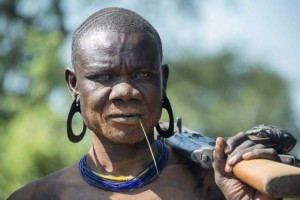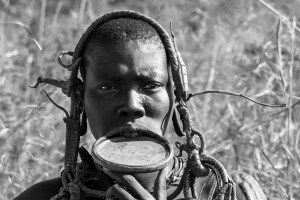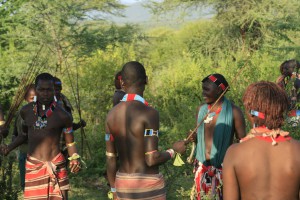Surma People
The greatest tourist attraction during any Ethiopia holiday is an incredible diversity & cultural heritages this country has to offer. Particularly Omo Valley that offers an extraordinary opportunity to meet more than a dozen varied ethnic groups that varies dramatically from region to region.
Surma People, a group of some 25,000 Nilotic-speakers divided into three main subgroups, the Mursi, chai and Tirma all of which still adhere to a traditional pastoralist lifestyle. Best known for the lip plates worn by their women, the various Surma subgroups all participate in a rigid but egalitarian political system based around age-sets similar to those of the related Maasai of the Kenyan-Tanzanian border area.
Surma people is very much like Mursi Tribes, and they also know for Stick fighting called Donga or Saginay bringing great prestige to men — it is especially important when seeking a bride — and they are very competitive, at the risk of serious injury and occasional death. The males are often shaved bald, and frequently wear little or no clothes, even during stick fights.
At a young age, to beautify themselves for marriage, most women have their bottom teeth removed and their bottom lip pierced, then stretched, so as to allow insertion of a clay lip plate. Some women have stretched their lips so as to allow plates up to sixteen inches in diameter. Increasing with exposure to other cultures, however, a growing number of girls now refrain from this practice. Their children are sometimes painted with white clay paint, which may be dotted on the face or body. Both the men and women scar their bodies. If you see a Suri (Surma) man with a scar usually implies he has killed a rival tribe.
They raise cattle and farm when the land is fertile. Cattle are important to the Suri, as it is a status. In order for a man to marry women in Surma (Suri) tribe, he must own at least 60 cattle and Cattle are given to the family of the woman in exchange for marriage. Like the other Omo Valley tribes and Massia, the Surma will use the milk and blood from the cow. During the dry season, the people will drink blood instead of milk. Blood can be drained from a cow once a month. This is done by making a small incision in its neck.
Their villages normally range in size from 40 to 1,000 people, but a few may reach 2,500 people. Village life is largely communal, sharing the produce of the cattle. Though their chiefs (styled komaro) may wear the fur crown of a pagan priest-king, they are merely the most respected elder in a village and they can be removed. Few Surma are familiar with Amharic, the official language of Ethiopia, and their literacy level is very low.



